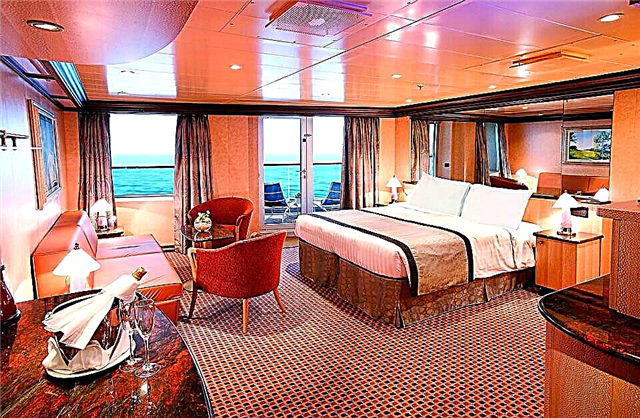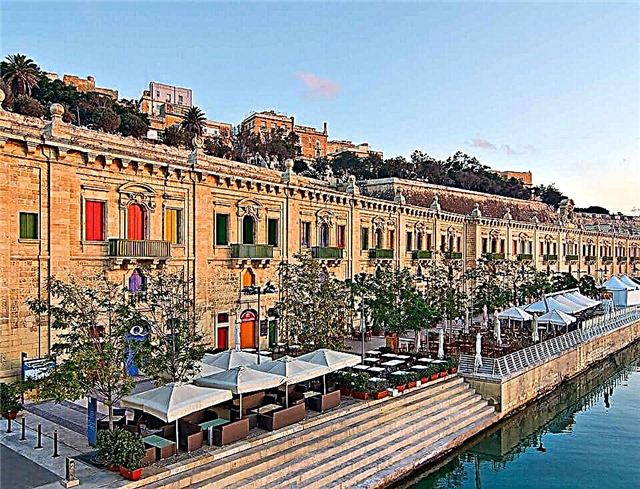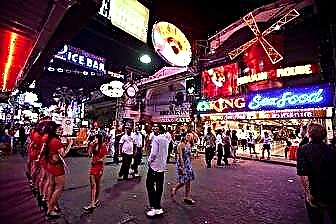Address: Italy, Florence
Start of construction: 1458 year
Completion of construction: 1464 year
Architect: Filippo Brunelleschi, Luca Francelli
Coordinates: 43 ° 45'54.4 "N 11 ° 15'00.7" E
Content:
Short description
The history of this majestic and monumental Florentine palace, the construction of which began in the 1400s, will be of interest to absolutely everyone: both ordinary travelers and people who have devoted their lives to studying the history of this magnificent blooming city.

Palazzo Pitti aerial view
The very fact that Palazzo Pitti at different times belonged to the great Medici dynasty, the Dukes of Lorraine and the Italian royal family, suggests that many tourists call this architectural structure the "Great Royal Palace" for a reason. Below in the material, the word "palazzo" will often be mentioned, which means a magnificent house-palace. Today Pitti is one of the largest and most interesting museums in Florence... Within its walls are the Silver Museum and the Carriage Museum, the Palatine Gallery and the Gallery of Modern Art.
Palazzo Pitti construction history
Palazzo Pitti stands proudly on the side of the Boboli Hill, on the southern bank of the Florentine Arno River. According to historical documents, the building was originally built by Luca Pitti, who, immediately after being knighted for services to the republic, began the construction of a luxurious and majestic building. However, who was the first architect who managed to create such splendor is not known for certain. Many experts believe that Pitti ordered the most famous and famous architect Filippo Brunellesco to develop a plan and make drawings of the palace. Luca Pitti wanted to surpass the Medici himself in everything, including in the size of the building and in its luxury. He commissioned an architect to design a palazzo, in which huge windows "as large as the doors of the Medici residence" would be obligatory, an inner courtyard "such that the entire Medici palace on Via Larga could fit in it."

View of Palazzo Pitti from Arnolfo Tower
The specialist, after listening to Pitti, really developed a project for a truly huge palace: the building is 201 meters long (!), And its height is slightly more than 37 meters. Moreover, everything should have been grandiose in his understanding: the same high floors, the same spans of portals and windows, the same cornices and balconies, the most powerful arches. The three-storey palace, built from the "debris" of the mountain (roughly hewn stones of a golden hue), is practically devoid of decoration of the facade. Perhaps the exception is the balustrade, which seems to "flow" along the very top of the huge structure, and the windows protruding forward and supported by arches.
As soon as the construction of the palazzo drew to a close, the Pitti family moved into the palace. However, they did not enjoy the luxury and splendor created for long. In 1472, Luca Pitti died suddenly, the family suffered losses, as a result of which the palace was abandoned and neglected. A century later, the palace passed into the possession of the Duke Cosimo I de Medici (later the first Grand Duke of Tuscany), or, to be more precise, his wife Eleanor of Toledo. This is the period of the new heyday of the Palazzo Pitti. In those days, the architect Bartolomeo Ammannati undertook its restoration, making significant changes to the original design of Brunellesco (?).

View of the facade of the Palazzo Pitti
According to his idea, a large wide staircase was built leading to the second floor, two side doors were replaced with floor windows, the length of the facade was increased due to the construction of side extensions. However, the main transformation that appeared in those days and deserves special attention is the appearance of a magnificent patio, which is rightfully considered a classic of the Renaissance. Also, connoisseurs of architectural styles can notice the "presence" of the Mannerist style, which is displayed in the Ionic, Doric and Corinthian columns.
The courtyard leading travelers to the park ends with a small fountain, a terrace and a horseshoe-shaped amphitheater. Today one can only imagine what lavish celebrations took place in the courtyard of Palazzo Pitti, what complex performances the artists showed in front of their audience. In some sources, you can read information that for one performance the entire area of the courtyard was even deliberately flooded: the artists in those days needed to play a naval battle. A unique semicircular fresco of the Palazzo Pitti of the late 1500s has survived to this day..
The new transformation of the palace took place in the 17th century, when Cosimo II and later Ferdinando II were in power. The Palazzo Pitti increased even more in size, and the collection of paintings was supplemented by works of the most famous artists in Europe. In addition, the palazzo has collected a collection of monumental altars by Andrea del Sarto, unique paintings by Van Dyck and Rubens, unforgettable landscapes of Salvator Rosa.

View of the courtyard of the Palazzo Pitti
The last most important changes in the architecture of the palace took place during the reign of the Dukes of Laurent. Then Pitti "received" two lateral semicircular wings: Rondo Bacchus and Coach Rondo. In addition, the so-called Palazzina Meridiana was built, which in translation into Russian literally sounds like "a small palazzo". In the Florentine Pitti Palace, you can also see traces of the influence of the Napoleonic era: the palazzo contains the rooms of Maria Luisa Bourbon, Napoleon's bathroom and Maria Luisa's bathroom, designed by Giusepe Chacialli, who preferred the style of Tuscan neoclassicism.
Palazzo Pitti today
As mentioned above, several museums are united under the roof of Palazzo Pitti, which every day receive guests from different parts of the world. First of all, we should mention the Palatine Gallery, known all over the world for its unique collection of paintings, among which it is impossible not to mention the works of Titian and Raphael, Botticelli and Caravaggio, Velazquez and Van Dyck, Rubens and Filippo Lippi. In addition, the Gallery of Modern Art is open to visitors in Pitti, which displays the works of Italian artists who worked in the 19th-20th centuries. The Costume Museum acquaints travelers with clothing from different eras. By the way, this is the only Museum of the Costume, which gives the most complete picture of the history of fashion. The Silver Museum contains real treasures: precious stones, items made of gold, silver and ivory. One cannot but admire the unique collection of vases: once collected by Lorenzo the Magnificent, vases of the Sassanid empire (Venice and Byzantium of the XIV century), ancient Roman amphoras.

View of the square in front of the facade of Palazzo Pitti
It remains to add that Palazzo Pitti in Florence is located at Piazza dei Pitti. The palace is open to visitors daily from 8 am to 7 pm... The ticket price for a tour of the luxurious Pitti Palace is 8.5 euros.











